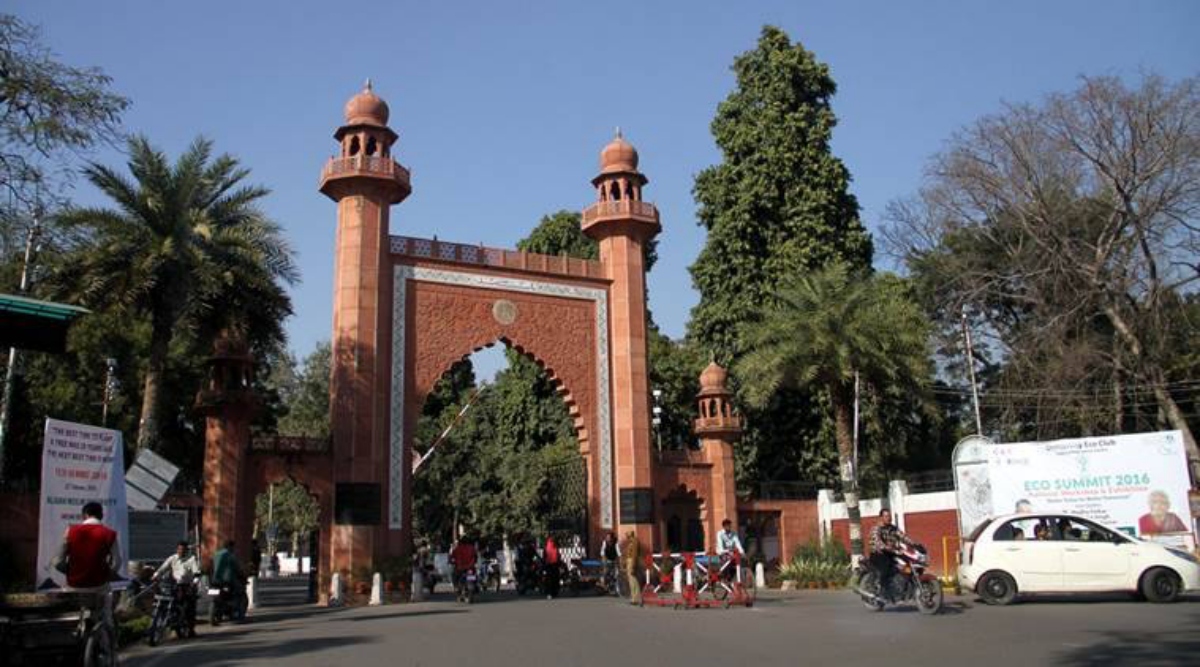 Throughout its history, AMU has produced gifted individuals who have excelled in every field. (File Photo)
Throughout its history, AMU has produced gifted individuals who have excelled in every field. (File Photo)By Sadaf Afreen and
On September 14, Aligarh Muslim University completed 100 years as a university. This makes it one of the oldest surviving universities in India. As part of the centenary celebrations, the officials of AMU are thinking of digging out the time capsule buried in the premises 143 years ago on the foundation day of the Muhammadan-Anglo Oriental (MAO) College, which eventually became AMU in 1920.
No one is aware of the exact contents of the capsule, but it is likely to reveal records of the rich history of the college at the time of its inception in 19th century.
The India of the 19th century was characterised by a tectonic shift in the religious and social structure of the country, as reformers like Raja Ram Mohan Roy, Dayanand Saraswati, Sir Syed Ahmad Khan and others endeavoured to overhaul the extant unjust systems. Among Hindus, this led to the Hindu Renaissance. And among Muslims, this produced the Aligarh Movement, which sought to reform the Muslim community and bring about changes in the educational, social and political aspects of their lives.
The forerunner of the Aligarh Movement was Sir Syed Ahmad Khan, the founder of MAO College. After the British decided to reduce the usage of Persian in the functions of the state, Sir Syed felt that the salvation of the Muslims lay in the adoption of English and Western education. In one of his speeches in 1863, he stated: “The reason why we are so backward is that whilst we have learned in and have benefitted by the philosophy, science and arts of the antiquity, we are almost entirely ignorant of those of modern times.”
Sir Syed himself was a product of the Mughal aristocracy, but his time in British service had made him cognisant of the importance of looking beyond traditional Islamic education. He began his quest by founding schools at Moradabad (1858) and Ghazipur (1863).
A Scientific Society was established in 1864 to translate Western knowledge into local languages and to instil a scientific temper among the people. Sir Syed also established the Muhammedan Civil Service Fund Association to sponsor travel of Muslims to London to take the ICS exam.
He dreamed of creating an educational institution along the lines of Oxford and Cambridge universities. But the going wasn’t easy. One of the main obstacles was the lack of funds. So much so, that there are stories about Sir Syed’s perseverance and tenacity in his quest of seeking contributions for the creation of MAO College.
One such story was recounted by our history professor, in which a detractor threw a shoe at him while he was out raising funds for the college. Unperturbed, Sir Syed picked up the shoe, placed it in his daan peti and walked on!
Vehement opposition from the orthodox elements was another obstacle, which was probably made worse by Sir Syed’s open admission of the inadequacy of traditional Islamic education. In a scathing critique of orthodoxy, he said: “The old Muhammadan books and their tone of writings do not teach the followers of Islam independence of thought, perspicuity and simplicity, nor do they enable them to arrive at the truth of matters in general; on the contrary they deceive and teach men to veil their meaning to embellish their speech with fine words, to describe things wrongly and in irrelevant terms, to flatter with false praise, to live in a state of bondage, to puff themselves up with pride, haughtiness, vanity, self-conceit to hate their fellow creatures, to have no sympathy with them, to speak with exaggeration, to leave the history of the past uncertain and to relate facts like tales and stories.” (For his trouble, the clergy issues five fatwas against him)
Despite the obstacles, Sir Syed succeeded, and the MAO college was established in 1877. Eventually, it became the Aligarh Muslim University after the AMU Act was passed in 1920. Sadly, that could only be accomplished 22 years after Sir Syed’s death.
On the eve of the university’s 100th anniversary, AMU officials are planning to bury another time capsule containing details of the institution’s achievements. Throughout its history, AMU has produced gifted individuals who have excelled in every field.
According to the list of prominent alumni available on AMU’s website (which is 29 pages long), AMU has produced 46 freedom fighters and AMU graduates have become the heads of state/government of four different countries (India, Pakistan, Bangladesh and Maldives), supreme court and high court judges of seven different nations (India, Pakistan, Bangladesh, Uganda, Tanzania, Nigeria and Great Britain) and have made their country and alma mater proud in numerous other fields.
It is pleasant to imagine that when this time capsule is discovered at some point in the future, AMU will have another thousand reasons to celebrate and cherish.
Afreen studies literature at AMU. Sharma has studied history and economics at AMU, and is a member of Students for Liberty, a non-profit organisation
📣 The Indian Express is now on Telegram. Click here to join our channel (@indianexpress) and stay updated with the latest headlines
For all the latest Opinion News, download Indian Express App.